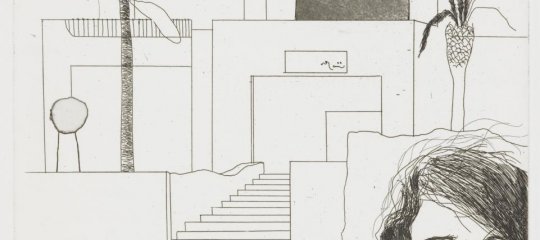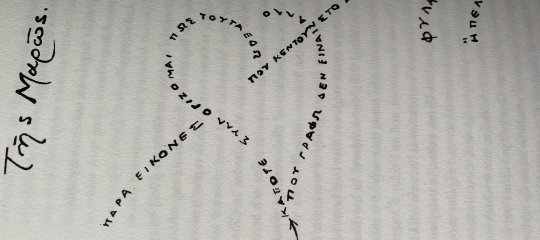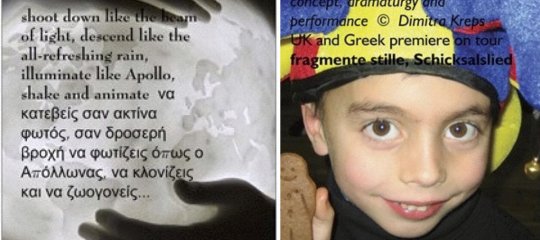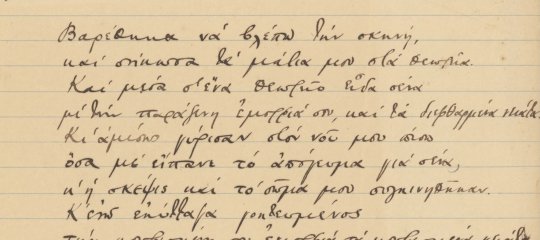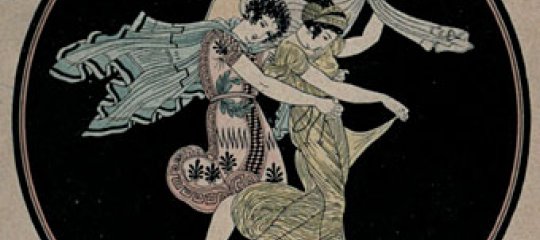ἐξ ἐρίων δὴ καὶ κλωστήρων καὶ ἀτράκτων
Name: Charles Stewart
Module convenor: Dr. Dimitra Tzanidaki-Kreps
Submission due date: 12 January 2018
- 1 of 7 -
ἐξ ἐρίων δὴ καὶ κλωστήρων καὶ ἀτράκτων
Lysistrata’s Woolmaking Formula for Peace1
Introduction
Lysistrata, recently emerged from the Propylaea, is arguing with a proboulos about the conduct
of the war with Sparta. She criticises the behaviour of the Athenian men, who, risibly, can be
seen strutting around the agora fully-armed (555-64). The proboulos counters with a question:
πῶς οὖν ὑμεῖς δυναταὶ παῦσαι τεταραγμένα πράγματα πολλὰ ἐν ταῖς
χώραις καὶ διαλῦσαι; “So how is it possible for you [women] to put an end to the highly
confused events in the lands and sort things out?” (565-6). In his use of τεταραγμένα and
διαλῦσαι, the proboulos adumbrates Lysistrata’s response. Just like a teasing apart a mixed-up
(τεταραγμένος) skein of wool, she says, τὸν πόλεμον τοῦτον διαλύσομεν, we will untangle
this war, if we are allowed (567-9). In the face of considerable scepticism from the proboulos
(ὦς ἀνόητοι, he opines), Lysistrata gives a detailed weaving metaphor to illustrate how the
state should be set in order, and peace achieved (574-86).
This essay examines that metaphor in the context of the political and war situation at the time
Lysistrata was first performed. It considers traditional gender roles in the fifth-century Greek
polis and Lysistrata’s inversion of those roles in her weaving analogy. Aristophanes’ comedic
purpose in the weaving speech, in Lysistrata as a whole, and more generally across his corpus is
examined. In addition, some observations are made about the sound pattern of Lysistrata’s
speech and, in a personal argument, a speculative suggestion is advanced that the audience
might have associated her cadences with the familiar rhythms of a domestic weaving loom.
The political context
The dating of Lysistrata depends on internal evidence: both on what is, and what is not, present
in the text, in the context of events at the time as described by Thucydides.2
That evidence strongly favours performance at the Lenaia (an Athenians-only festival) in early February
1 Lysistrata lines 565-86. Relevant adjacent lines are also cited in this essay. Line numbers are
indicated in parentheses in the text.
2 Thucydides Book 8 covers the period during which Lysistrata was produced
2 of 7 -
412/11.3 Athens had recently been trouble. The disastrous Sicilian expedition of 415-413 had
destroyed much of Athens’ naval fleet, and with it her crucial dominance of the sea, as well as
bringing major losses to her army and military leadership. But the city was recovering. A
board of ten probouloi had been established to propose emergency measures for swift approval
and implementation.4
Athens had drawn on the special financial reserve set up by Pericles in
431 and started to rebuild its fleet. Anti-democratic forces were at work, although the
democracy was for the moment intact. (It was not to be many months before it was briefly
replaced by an oligarchic constitution). As the Athenian audience settled to watch
Aristophanes’ new production, the Sicily debacle, the political process which led to it, and the
continuing threat from Athens’ enemies, Sparta and her allies, would have been at the forefront
of their minds. Behind that must, surely, have been a weariness over an inconclusive intra-
Hellenic conflict that had continued, on and off, for nearly twenty years.
Women and men and weaving and war
Odysseus’ faithful wife Penelope famously wove by day and unravelled her work by night, a
subterfuge which allowed her to ward off her collection of suitors for three years.5
There is a detail in the Penelope story that shows us the proper relationship, in the Greek conception,
between the work of women and the business of men. Penelope, upstairs in the women’s
quarters of the house, comes downstairs to the gathering of men below to complain about the
song the minstrel is playing, which is about the disasters suffered on the return from Troy. Her
son Telemachus sends her straight back up to her loom and spindle: weaving, he says, is the
work of women, while talking is the concern of men.6 Lysistrata inverts this traditional
demarcation. First, echoing the Iliad, she sets up the conventional paradigm, wearily mimicking
a typical Greek husband, who tells his wife to get back to the loom and quotes Hector: πόλεμος
δ᾽ ἄνδρεσσι μελήσει, war is for men to take care of (520).7
A few lines later, she upends
Hector’s assertion. κᾆτα ξαίνειν, ‘then you comb wool’ she tells the proboulos (536): πόλεμος
δὲ γυναιξὶ μελήσει, ‘war is the business of women.’ (538).
3 Henderson (1987) xv-xvi
4 Henderson (1987) xvi
5 Homer Odyssey 2:84-110
6 Homer Odyssey 1:325-59
7 Homer Iliad 6.492
3 of 7 -
The weaving metaphor
Let us look in detail at Lysistrata’s inversion of the traditional order. If indeed πόλεμος δὲ
γυναιξὶ μελήσει, how would women suggest the war be brought to an end? ἐκ τῶν ἐρίων
τῶν ἡμετέρων, ‘from the methods of our wool’ is Lysistrata’s answer (573). First, just as with
raw wool, the sheep-dung needs to be washed from τῆς πόλεως, the body politic. The villains
need to be beaten out like plucking out burrs from wool, and those who stick together and
compress themselves like felt in order to gain office should be combed out. Here Lysistrata is
probably referring to the factions or ἑταιρείαι who, according to Thucydides, were at the time
responsible for conspiracies of mutual aid in seeking office. In the first part of 411, anti-
democratic factions were working together to overthrow democracy in Athens.8
The bad actors removed, people should be brought together in a wool-basket of good feeling.
ἅπαντας καταμιγνύντας, mixing up everyone, says Lysistrata (578-9). She means, at this
point, all Athenian citizens. To these, she adds metics, other foreigners who are friendly to
Athens, and public debtors, who were deprived of their citizens’ rights until their debt was
repaid.9
None of these groups would normally have had a voice in the Athenian political
process. Finally Lysistrata proposes gathering together, like loose bits of wool, τάς γε πόλεις,
ὁπόσαι τῆς γῆς τῆσδ᾽ εἰσὶν ἄποικοι, ‘any cities that are colonies of this land’ (582). All these
disparate categories should be brought together into one, and, just like a great ball of wool, be
used to weave a cloak for the people. The verb used here, ὑφῆναι, means both ‘to weave’ and
‘to plan a scheme’, which consolidates the metaphorical link between weaving and politics
(586).10
Immediately prior to providing the proboulos with this recipe for proper administration of the
Athenian state, Lysistrata had, as we saw in the Introduction above, offered a wool metaphor
to end the war with Sparta. Like drawing wool this way and that with spindles, she says,
women will untangle the war by sending embassies here and there.
8 Sommerstein (2007) 183. Thucydides History of the Peloponnesian War 8.54.4
9 Sommerstein (2007) 183
10 According to the LSJ Lexicon
4 of 7 -
Was Aristophanes making a serious point?
Taken at face value, Lysistrata’s proposals are both simplistic and rather implausible. There
was no doubt a real desire among the demos to rid the political sphere of oligarchic factions,
metics were highly valued as hoplites and in the navy,11 and Athens of course valued the
support of her allies. But simply assembling every person well-disposed towards Athens
together as friends seems an unlikely and impractical formula for political resolution at home,
and merely sending out embassies to negotiate peace (embassies were in any case a feature of
the war with Sparta, as can be ascertained from Thucydides) seems an optimistic prescription
for ending the war. Henderson argues that the play’s ‘fantastic and utopian features’ are more
than just escapist entertainment, and represent an attempt by Aristophanes to reassure the
Athenians about their prospects for an acceptable settlement.12
However, I am inclined to agree with Sidwell’s initially counterintuitive argument that Aristophanes’ intent is parody,
not praise, of the womens’ ideas about the conduct of politics and war. Sidwell argues that
following the Sicilian defeat there was some encroachment by women into the political sphere,
including the involvement of Lysimache, the priestess of Athena Polias, and that Lysistrata
echoes an underlying real desire among Athenian women to end the conflict. But the
woolworking speech, argues Sidwell, is a comedic female appropriation of a contemporary
Socratic woolworking metaphor later recorded as a (male) Socratic dialogue by Plato in the
Politicus.13
The whole point of the play, in Sidwell’s view, is that the women’s plan for ending
the war is totally unrealisable. Aristophanes intends to make Lysistrata (as the altera ego of
Lysimache) appear crass and foolish. Lysistrata’s ‘peace’ as portrayed at the end of the play
would simply be a capitulation by Athens.14
Sidwell’s ideas can be extended to a more general observation, made by Olson, about
Aristophanes’ comedic purpose. Olson argues that there is no evidence that any of
Aristophanes’ plays were intended to have a substantial effect on public policy. For example,
Acharnians expresses severe disaffection with the war, but offers no solutions, instead merely
mocking the stupidity of the Athenians. Similarly, the parabasis of Frogs calls for national
11 Henderson (1987) 143
12 Henderson (1987) xx
13 Plato Politicus 308c-309b, 310e, 311b-e
14 Sidwell (2009) 252-65.
5 of 7 -
reconciliation – a call which was rapturously received by the audience and won Aristophanes a
prize – but it offers nothing more concrete than expressing exactly what the demos were
thinking. Aristophanes’ comedic purpose was to entertain (and to win the comedy prize) by
capturing the public mood rather than shaping it or seeking to teach anything at all to his
audience.15
The audience was free to laugh, but Aristophanes was not telling them to do
anything in particular about the sorry state of affairs in the polis.16
Lysistrata’s woolmaking metaphor, in other words, is not a serious political suggestion.
Listening to Lysistrata: the weaving speech in performance
Lysistrata’s weaving metaphor, it seems to me, might be seen structurally as multi-level. First,
there is the explicitly-stated political analogy. Second, the speech is itself woven into the two
main plots, the sex strike and the occupation of the Acropolis. Finally, the linguistic structure
weaves its own internal pattern, as it shuttles back and forth between political and domestic
references. This latter point is treated in detail by Carroll Moulton, who illustrates the pattern
to be found in some of the lines in the following table.17
As Moulton notes, this interplay continues throughout the woolmaking image. Moulton does
not directly connect it with the back-and-forth of a weaving shuttle. Nonetheless, starting from
Moulton’s back-and forth observation I set out here a personal argument about the
performative aspect of the weaving metaphor.
What did a domestic loom sound like in operation? The subject has recently been examined in
detail by Giovanni Fanfani of the Deutsches Museum in Munich, whose academic interests
include the relationship between ancient crafts, especially weaving, and ancient poetry and
15 Olson (2010) 45
16 Olson (2010) 69
17 Moulton (1981) 55
6 of 7 -
song.18
He has conducted an etymological study of the noun κερκίς, the Ancient Greek name
for a device used for beating the wefts into place during the weaving process. He argues that
striking the threads with a κερκίς was visually and acoustically distinctive, producing one of
the most typical weaving gestures and, more importantly, a recognisable rhythmic sound.19
In support of his thesis, Fanfani cites 9th to 12th century etymologica. Quoting a line from Sappho:
γλύκηα μᾶτερ, οὔ τοι δύναμαι κρέκην τὸν ἴστον, ‘Sweet mother, I really cannot strike the
loom’, the medieval lexicographers explain κερκίς as: παρὰ τὸ κρέκειν ὄ ἐστιν ἠκεῖν, ‘derived
from κρέκειν, that is to resound’. Together with a literary topos about the ‘song of the κερκίς’
found in two fragments of Socrates and in Hellenistic epigraphy, this suggests, argues Fanfani,
that a κερκίς in use may have made the loom rhythmically resound.20
Let us now consider the sound patterns in Lysistrata’s weaving speech. For example:
ἐκραβδίζειν τοὺς μοχθηροὺς καὶ τοὺς τριβόλους ἀπολέξαι,
καὶ τούς γε συνισταμένους τούτους καὶ τοὺς πιλοῦντας ἑαυτοὺς (576-77)
and
καταμιγνύντας: τούς τε μετοίκους κεἴ τις ξένος ἢ φίλος ὑμῖν,
κεἴ τις ὀφείλει τῷ δημοσίῳ, καὶ τούτους ἐγκαταμεῖξαι: (580-81)
In each of these pair of lines there appears to be significant repetition and rhythmical pattern of
καὶ τοὺς, κεἴ τις, καὶ τούτους, and –ους endings in general. This may of course be driven
simply by the demands of inflection and metre. I have found no indication otherwise in
scholarship. But it is tempting to imagine the protagonist delivering Lysistrata’s speech
rhythmically, perhaps with accompanying gestures, in such a way as to echo the familiar
sounds and movements of weaving at a domestic loom.
18 Fanfani (2017)
19 Fanfani (2017) 422. Sappho 102 V
20 Fanfani (2017) 425 quoting, inter alia, the 9th century Etymologicum Genuinum
7 of 7 -
Bibliography
Primary Texts
Aristophanes. Acharnians.
Aristophanes. Frogs.
Aristophanes. Lysistrata.
Homer. Iliad.
Homer. Odyssey.
Plato. Politicus.
Sappho.
Thucydides. History of the Peloponnesian War.
Secondary Sources
Fanfani, G. (2017). 'Weaving a Song. Convergences in Greek Poetic Imagery between Textile
and Musical Terminology. An Overview on Archaic and Classical Literature.', in Gaspa, S.,
Michel, C. & Nosch, M.-L. (eds.) Textile Terminologies from the Orient to the Mediterranean and
Europe, 1000 BC to 1000 AD.: 421-436. Lincoln, NE: University of Nebraska-Lincoln Libraries.
Henderson, J. (1987). Aristophanes’ Lysistrata. Oxford: OUP.
Moulton, C. (1981). Aristophanic Poetry. Göttingen: Vandenhoeck & Ruprecht.
Olson, S.D. (2010). 'Comedy, Politics and Society', in Dobrov, G.W. (ed.) Brill’s Companion to the
Study of Greek Comedy. Leiden: Brill.
Sidwell, K.C. (2009). Aristophanes the Democrat : The Politics of Satirical Comedy during the
Peloponnesian War. Cambridge and New York: Cambridge University Press.
Sommerstein, A.H. (2007). Aristophanes’ Lysistrata. London: Aris and Phillips.
- Εισέλθετε στο σύστημα για να υποβάλετε σχόλια

